If you've ever wondered about the long-standing tradition of using baby powder, the story behind this household staple may surprise you. From its historical roots to the modern-day controversies surrounding its safety, the evolution of baby powder is a tale worth exploring. Whether you're a parent looking for the best options for your little one or simply curious about its various applications, the world of baby powder holds more secrets than meets the eye.
History of Baby Powder
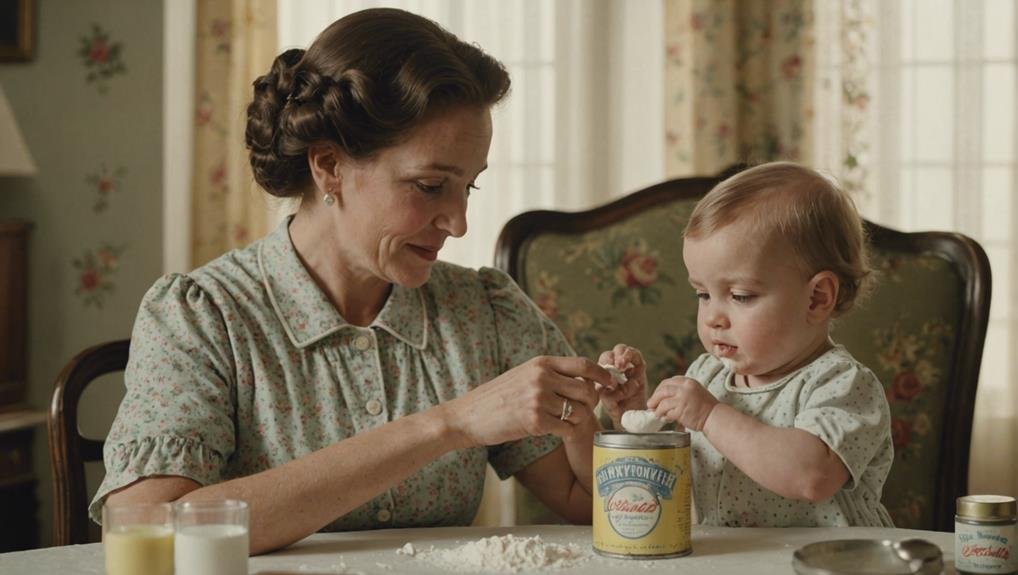
Baby powder has a long and fascinating history that dates back centuries. Its manufacturing process has evolved over time, with ancient civilizations using various ingredients like crushed herbs and minerals to create powders for skin care.
The cultural significance of baby powder can be seen across different societies, where it has been used not only for babies but also by adults for its health benefits.
Historically, baby powder was esteemed for its ability to soothe and protect the skin, making it a valuable product for both infants and adults. The gentle nature of baby powder made it a popular choice for preventing diaper rash and keeping skin dry.
However, concerns have arisen regarding its environmental impact, particularly with traditional talc-based powders. This has led to a shift towards more eco-friendly alternatives in recent years, highlighting the importance of sustainability in the production and use of baby powder.
Ingredients in Baby Powder
When considering the formulation of baby powder, it's crucial to understand the key ingredients that contribute to its effectiveness and safety for skin care. The primary components of baby powder often include talc or cornstarch, which help absorb moisture and prevent friction, keeping your baby's delicate skin dry and comfortable. Talc has been linked to health concerns, such as respiratory issues when inhaled, leading many manufacturers to shift towards cornstarch-based alternatives. These alternatives are generally considered safer for babies, especially when applied correctly to avoid inhalation.
It's essential to be mindful of the health effects associated with the ingredients in baby powder to ensure your little one's well-being. Opting for talc-free or hypoallergenic formulations can reduce the risks of potential adverse reactions and keep your baby's skin healthy and happy.
Moreover, considering the environmental impact of these ingredients is also crucial. Choosing brands that use sustainably sourced materials and eco-friendly packaging can help minimize the ecological footprint of baby powder production, contributing to a healthier planet for future generations.
Uses for Babies
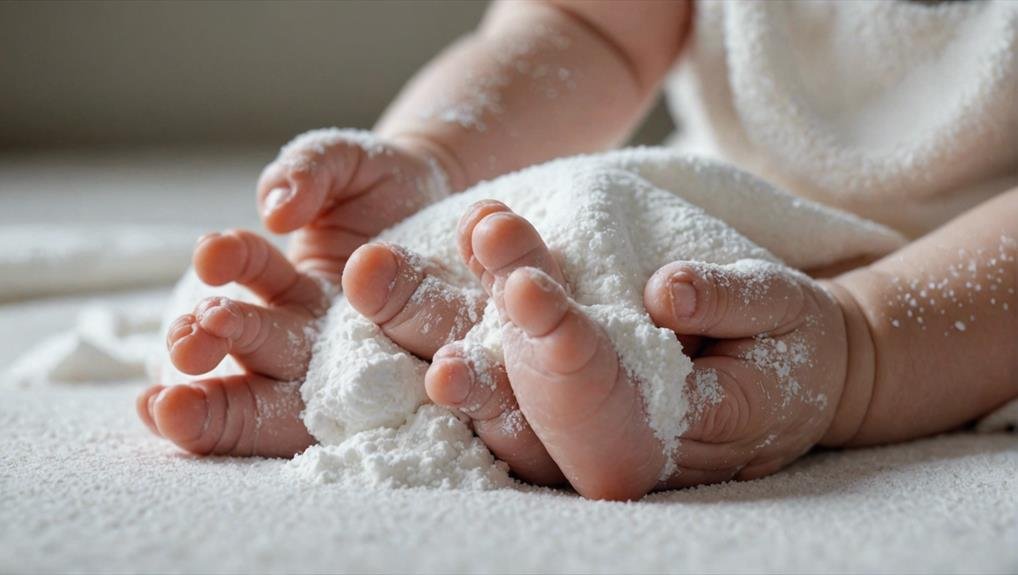
To care for your little one's skin, baby powder can be used in various ways to promote dryness and comfort. When your baby experiences diaper rash, applying baby powder can help absorb moisture and soothe the irritated skin. Remember to keep the area clean and dry before gently patting on the powder to create a protective barrier.
For general skin irritation, such as heat rash or chafing, baby powder can provide relief by keeping the skin dry and reducing friction. You can sprinkle a small amount of powder on the affected areas to alleviate discomfort and prevent further irritation.
Always ensure that the baby powder is applied away from the baby's face to avoid inhalation and potential respiratory issues. Also, be cautious not to overuse the powder, as it can lead to clogged pores or skin dryness.
Beauty Applications
For enhancing your beauty regimen, incorporating baby powder can provide versatile applications to achieve a fresh and polished look. When it comes to makeup setting, baby powder can be a game-changer. After applying your makeup, lightly dusting baby powder over your face can help set your foundation and concealer, keeping your look flawless throughout the day. The powder absorbs excess oil, leaving your skin with a smooth, matte finish.
Moreover, baby powder is a fantastic option for hair volumizing. If you're looking to add some oomph to your hair, sprinkle a small amount of baby powder at the roots and massage it into your scalp. The powder will absorb any grease, adding volume and texture to your hair. It's a quick and easy way to achieve that coveted voluminous look without any hassle.
Incorporating baby powder into your beauty routine can be a simple yet effective way to elevate your makeup and hair game, giving you a fresh and polished appearance effortlessly.
Talc Vs. Cornstarch
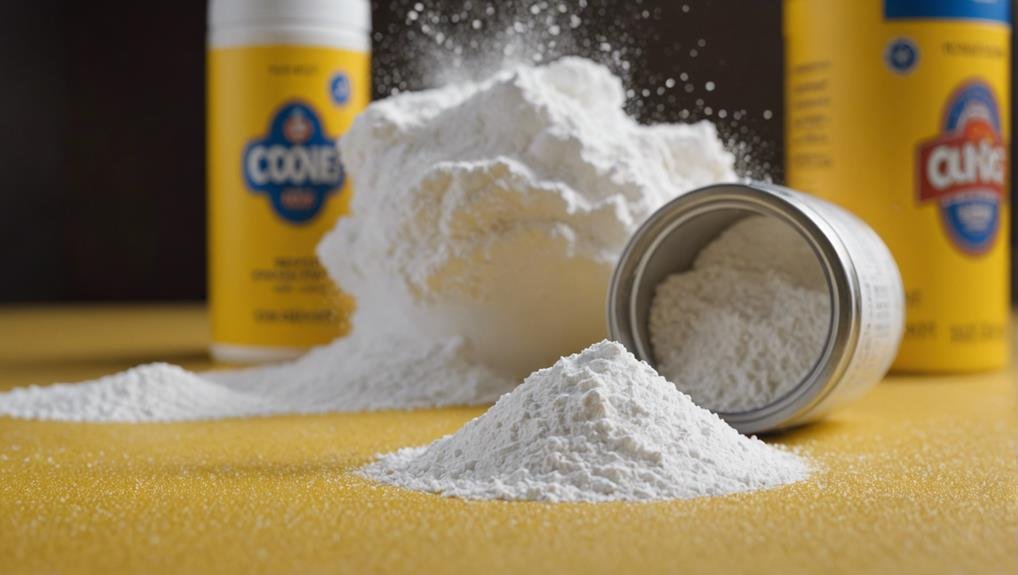
To make an informed choice between using talc or cornstarch in your beauty routine, understanding the differences between these two ingredients is crucial. Talc is a mineral composed of magnesium, silicon, and oxygen, known for its ability to absorb moisture and reduce friction. However, concerns have been raised about the health risks associated with talc, particularly its potential link to ovarian cancer when used in the genital area.
On the other hand, cornstarch, derived from corn kernels, is a natural alternative that serves a similar purpose to talc without the same health concerns. When it comes to the environmental impact, cornstarch is considered more eco-friendly compared to talc. Talc mining can lead to deforestation, soil erosion, and habitat destruction, whereas cornstarch is a renewable resource that can be sustainably produced.
Safety Concerns
Safety should be a top priority when choosing products for your beauty routine, especially when it comes to baby powder. Recent health studies have raised concerns about potential risks associated with talc-based powders, leading to product recalls by some manufacturers. It's essential to stay informed and be aware of these developments to make informed choices for you and your family.
Consumer awareness plays a crucial role in ensuring the safety of products like baby powder. By staying updated on health studies and product recalls, you can make educated decisions about which products to use. Legal implications have also come into play, with lawsuits highlighting the importance of companies prioritizing consumer safety and transparency.
When it comes to baby powder, your well-being and that of your loved ones are paramount. Being vigilant about the information available regarding health studies, product recalls, and legal implications can help you navigate the beauty aisle with confidence and peace of mind.
Regulatory Landscape
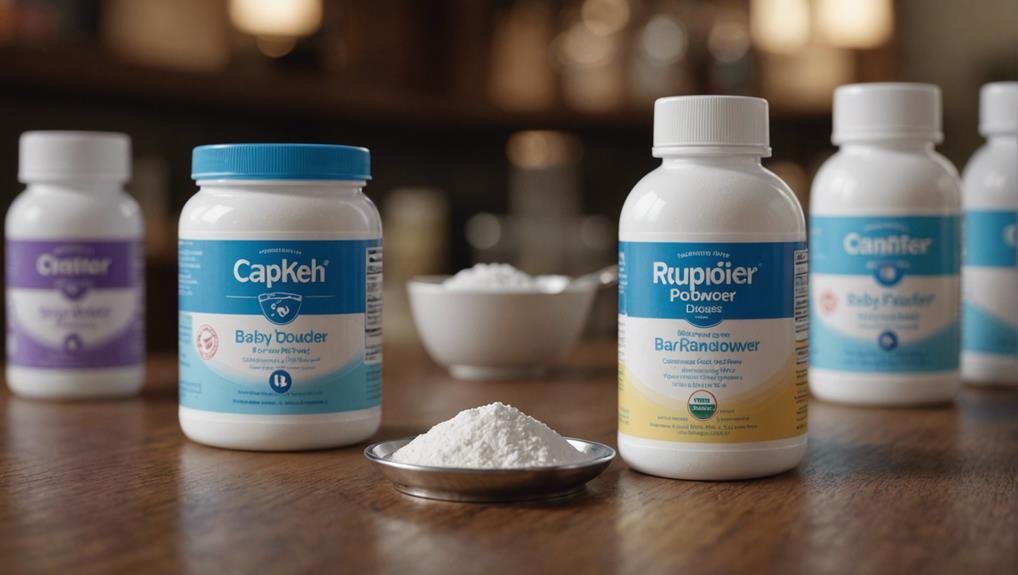
Navigating the regulatory landscape surrounding baby powder can provide valuable insights into product safety and oversight. The global impact of regulations on baby powder production and distribution is significant. Governments worldwide are implementing stricter guidelines to ensure consumer safety.
Industry response to these regulations is varied, with some companies reformulating their products to meet new standards. Public perception plays a crucial role in shaping the regulatory environment, as concerns over talc safety have led to increased scrutiny. Maintaining consumer trust is paramount for companies in the baby powder industry.
Transparency and adherence to regulations are essential to instill confidence in the safety of products. By staying informed about regulatory changes and understanding the industry response, consumers can make more informed decisions about the baby powder products they choose.
Alternatives to Talc
Consider exploring alternative ingredients in baby powder formulations to address concerns surrounding talc safety. Natural alternatives can provide a safe and effective option for you and your baby.
Many natural powders use ingredients like cornstarch, arrowroot powder, or kaolin clay, which help absorb moisture without the potential health risks associated with talc. Cornstarch, for example, is a popular choice due to its gentle nature and ability to soothe irritated skin. Arrowroot powder is another excellent alternative known for its absorbent properties and soft texture.
When selecting a baby powder, it's crucial to prioritize ingredients that are free from harmful chemicals and potential health risks. By opting for natural alternatives, you can minimize the chances of exposing your baby's delicate skin to irritants or toxins.
Embracing these alternatives not only ensures your baby's well-being but also promotes a more holistic approach to skincare. So, next time you reach for baby powder, consider making the switch to natural alternatives for a safer and healthier option.
How to Use Safely
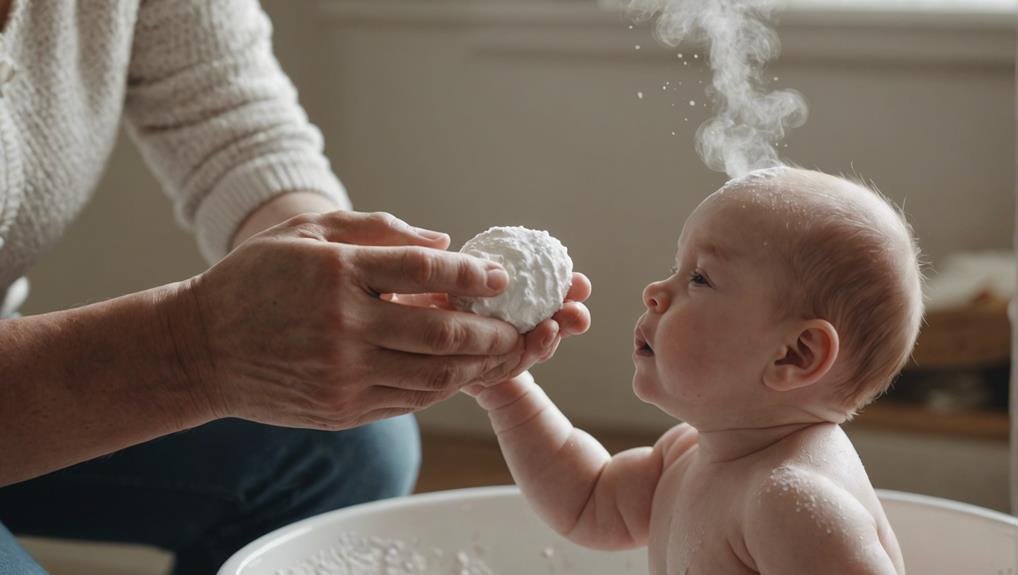
To ensure proper use of baby powder and protect your baby's skin, follow these essential guidelines.
Firstly, be vigilant about allergic reactions. Conduct a patch test before widespread use to check for any adverse skin responses. Prevention strategies include opting for hypoallergenic or fragrance-free baby powders to minimize the risk of irritation.
When applying the powder, keep it away from your baby's face to prevent inhalation, which can be harmful to their delicate respiratory system.
Consider the environmental impact of traditional talc-based baby powders. Sustainable options like cornstarch or arrowroot powder are eco-friendly alternatives that work just as effectively.
Future Outlook
As you look ahead to the future, advancements in baby powder formulation and packaging are shaping a safer and more sustainable landscape for infant skincare. Market trends show a shift towards eco-friendly options, aligning with consumer preferences for products that aren't only gentle on delicate baby skin but also on the environment.
Manufacturers are increasingly focusing on sustainability, developing baby powders that are free from harmful chemicals and come in recyclable or biodegradable packaging. This commitment to eco-conscious practices reflects a growing awareness of the impact of traditional skincare products on both personal health and the planet.
In the coming years, you can expect to see a wider array of baby powder options that cater to different needs and preferences. Whether it's organic ingredients, cruelty-free certifications, or innovative packaging solutions, the future of baby powder is set to be more diverse and environmentally responsible.
Frequently Asked Questions
Can Baby Powder Be Used on Pets?
When grooming pets, explore powder alternatives suitable for their skin. Always prioritize their safety by avoiding products not formulated for animals. Consult your vet for advice on pet grooming practices and suitable products.
Is Scented Baby Powder Safe for Babies?
Wondering if scented baby powder is safe for babies? Be cautious of potential allergic reactions and skin irritation. Inhalation risks can lead to respiratory issues. Opt for unscented options to prioritize your baby's health.
Can Baby Powder Help With Chafing in Adults?
For chafing relief in adults, baby powder can be helpful. However, some adults prefer alternatives due to skin irritation risks. It's essential to choose products that suit your skin type and needs for comfort.
What Is the Best Way to Store Baby Powder?
To properly store baby powder, keep it in a cool, dry place away from moisture and direct sunlight. Airtight containers or resealable bags work well. This helps maintain its freshness and effectiveness for soothing and keeping skin dry.
Are There Any Eco-Friendly Baby Powder Options Available?
When looking for eco-friendly options, seek products with biodegradable packaging and natural ingredients. These choices not only benefit the environment but also provide a gentle and safe option for your baby's delicate skin.
Conclusion
Now that you've learned about the history, ingredients, and uses of baby powder, you may be wondering about its safety.
While talc has raised concerns, there are safer alternatives like cornstarch available.
By being informed and using baby powder responsibly, you can continue to enjoy its benefits for your little one or yourself.
Stay curious, stay safe, and keep exploring the world of natural alternatives for a healthier future.

